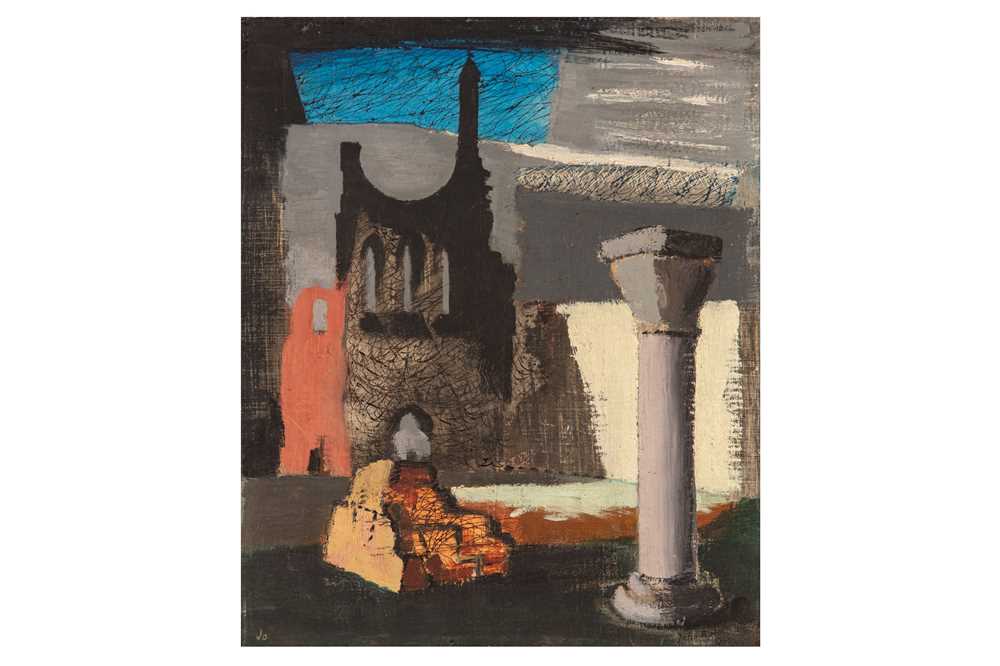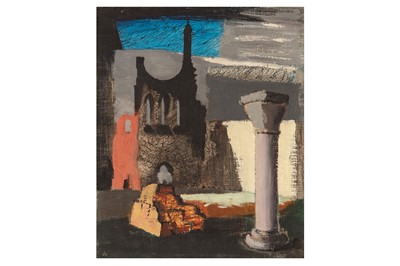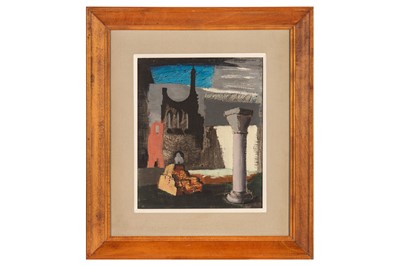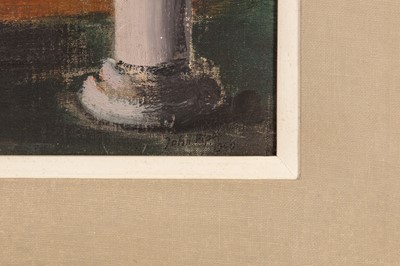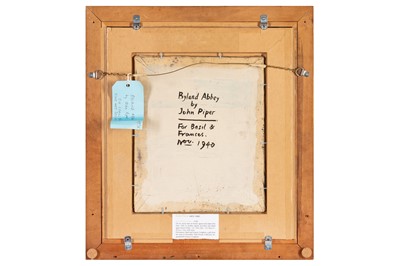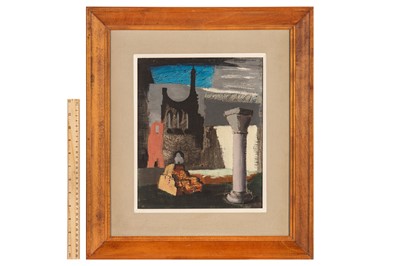29th Mar, 2023 10:00
Modern British & Irish Art
JOHN PIPER, C.H. (BRITISH, 1903-1992)
JOHN PIPER, C.H. (BRITISH, 1903-1992)
Byland Abbey
signed and dated 'John Piper/1940' (lower right); further signed, inscribed and dated again 'Byland Abbey/by/John Piper/For Basil &/Frances./Nov.1940' (verso)
oil and pen and ink on canvas laid on board
30 x 25.4 cm. (11 3/4 x 10 in.)
Provenance
The Artist, by whom gifted to
Basil and Frances Creighton, thence by descent to
Private Collection, U.K.
Their sale; Bonhams, London, 3 March 2011, lot 58
With The Fine Art Society, London, where acquired by the present owner
ARR
“Intensity is all that matters in painting”
(John Piper)
John Piper: one of the most renown and revered names in British Art whose contribution to the wider art world is immeasurable. By 1930 he had become an established and key component of Modernism, his style during this period characterized by bold, graphic shapes and bright, contrasting colours.
The present work, Byland Abbey, painted in 1940, shows the beginning of the artist’s shift from bold, modernist abstraction to a more pictorial, figurative style he would later become synonymous with. Piper first visited the ruined Cistercian monastery in the 1930s and was immediately struck by the beauty and architectural grandeur of the site. He returned to the abbey many times over the course of his career, producing a large body of work that responded to its history and character.
In 1937 he met the poet and writer John Betjeman, who asked Piper to collaborate on The Shell Guide to England, which was first published in 1934. It revelled in Piper’s childhood fascination of churches and architecture and was a pioneering guide to the architecture and landscapes of England, which included many of Piper's illustrations and photographs. The book was a huge success and helped to establish both men as leading figures in the cultural life of Britain.
One of Piper's most famous works from this period is his painting The Ruins of Coventry Cathedral (1940), which depicts the bombed-out ruins of the medieval cathedral in Coventry after it was destroyed by German bombs during World War II. The painting is a powerful and poignant expression of the destruction and loss wrought by the war.
Byland Abbey is a formidable example of Piper’s styles in contrast. The bold, abstract segments of colour in collaboration with the more distinctive, carefully selected, figurative forms of the abbey create a stage-like sense of drama and atmosphere. The painting captures the sense of grandeur and decay that Piper found so compelling about the site, and helped establish his reputation as one of the leading British artists of his time.
Sold for £31,250
Includes Buyer's Premium
Do you have an item similar to the item above? If so please click the link below to request a free online valuation through our website.
